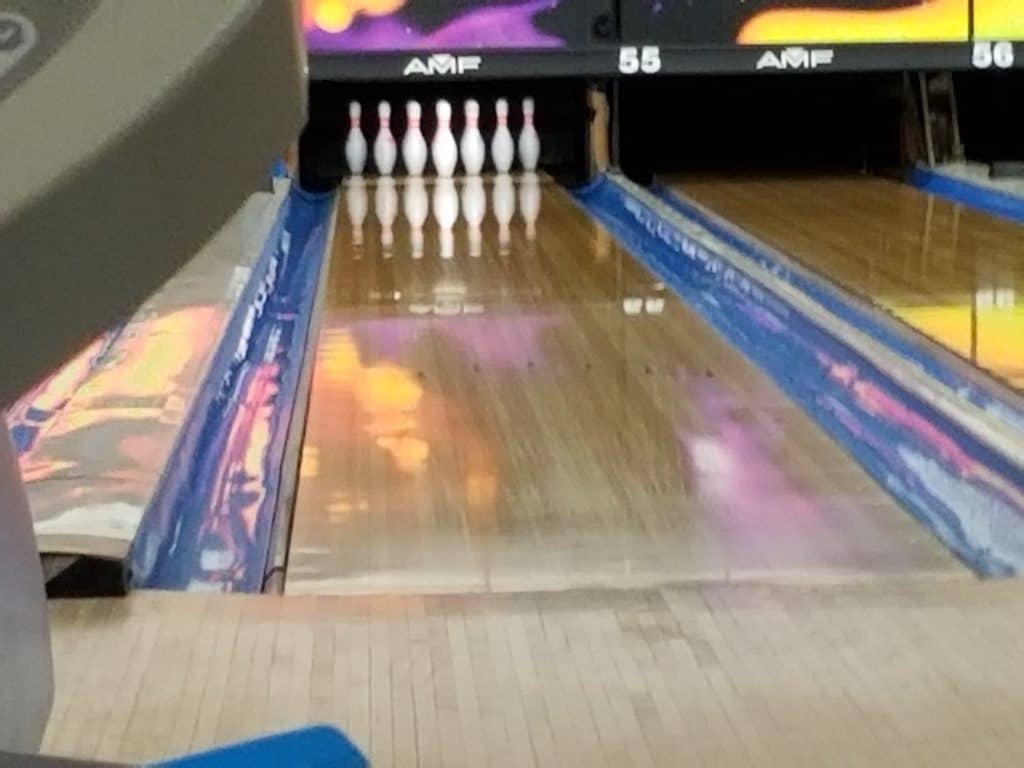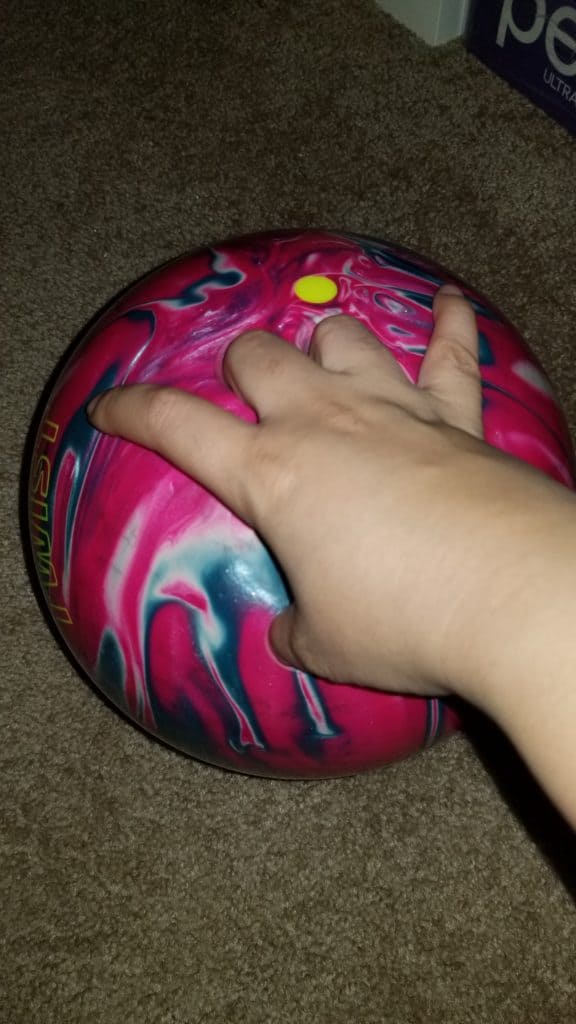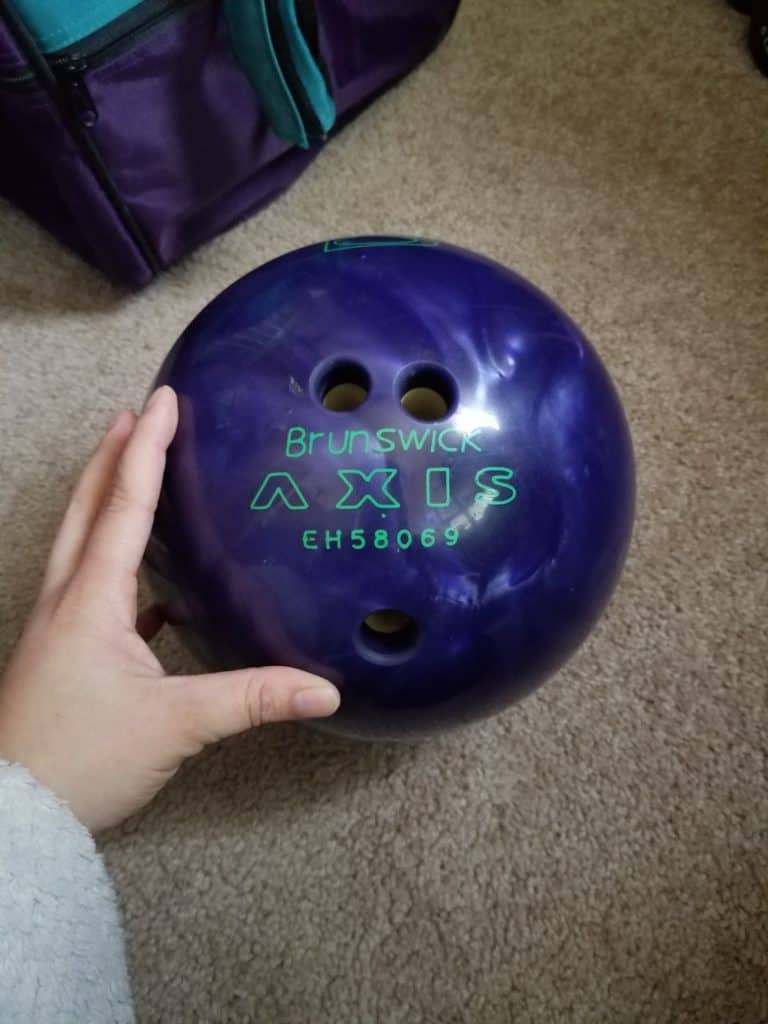When I went to buy my first bowling ball I became confused by all the different options when it came to choosing one. I eventually came to the conclusion to get an entry-level bowling ball since I’m an entry-level player, even though I wanted “one of those bowling balls that can hook”.
What are the different types of bowling balls and how do you choose what’s best for you? There are 4 different types of bowling balls based on coverstock material. There’s plastic( or polyester depending on who you talk to), urethane, particle, and reactive resin. Each coverstock reacts differently on the bowling lane. To choose the best bowling ball for yourself you need to know your budget because bowing balls can get expensive and if you plan on playing in tournaments or if you just don’t want to use house bowling balls.
Choosing the right type of bowling ball is a very personal choice. There’s the weight to consider, the different coverstock types, the different core types. Not to mention all the different designs.
Types of bowling balls for different lane conditions
There are four types of bowling lane oil conditions to be aware of, dry, medium-dry, medium, medium-heavy, and heavy oil. It will take some time to understand what kind of lane conditions you’re dealing with, but with time you will know after a shot or two and will adjust bowling balls to fit the lane conditions.
Oil effects the bowling lanes by helping your bowling ball glide down the lane, without the oil on the lane your bowling ball as well as the lane would get really scuffed and damaged. After awhile the lanes would be useless due to all the damage. Bowling balls have different cover stocks that react differently to different oil patterns. Have you ever noticed the guys at the bowling alley with multiple bowling balls?

Want to learn why no 2 bowling lanes are the same? CLICK HERE
Dry bowling lanes will create more friction between the bowling ball and the lane. Dry bowling lanes are easier to hook a bowling ball on than lanes with lots of oil. With enough practice you could even hook a house bowing ball, my fiancé can. For bowling on dry lanes, you’ll want to use a plastic or polyester bowling ball.
Medium to heavy oil bowling lanes offers less friction which is when bowling balls with more grip will help with hooking the ball and getting strikes. Which if you’re just looking to have fun a bowl a few times a month or year, shouldn’t matter. For medium-dry, to medium oiled bowling lanes plastic bowling balls will work fine, but urethane and particle bowling balls would be better suited for this.
Heavily oiled lanes could be lanes where the oil pattern goes farther down the lane, or it could mean there is just more oil at the start of the lane. This varies from bowling alley to bowling alley.
What are bowling balls made of?
What should I look for when buying a bowling ball?
When you’re buying your first bowling ball you should first ask yourself what your current skill level is. Can you hook a bowling ball? Or do you throw straight? Do you want to join a team or just bowl casually?
If you’re new to bowling, which I’m assuming you are since you want to know what to look for when buying a bowling ball, don’t’ worry about getting whatever bowling ball professional bowlers use. A new bowler will do fine with either a plastic coverstock bowling ball or an entry-level bowling ball.
Both are great for beginners and very affordable if you’re just starting out and aren’t sure where you’re going with the sport. The next thing you should be looking for is making sure that you get the right weight for your bowling ball. You’ve most likely only been bowling with house bowling balls and will assume that weight bowling ball is what weight you’ll need for your custom bowling ball.
You’ll be surprised to know that your custom bowling ball will weigh more than the house bowling ball you’ve been playing with. And that’s because house bowling balls have the finer holes drilled rather large so that more people will be able to use them. Obviously, the 6lbs and 7lbs bowling balls are meant for small children so the finger holes on those bowling balls tend to be very small.
Not sure if you need a heavy or light bowling ball? read this article to find out

When you get a bowling ball drilled for your finger and grip specifically the weight of the bowling ball will be more evenly distributed so that you could hold more weight. If you haven’t noticed, when you bowl with a house bowling ball, due to how the finder holes are laid out when you grip the ball, you will grip it harder than you would a bowling ball with finger holes drilled for your hand, rather than the masses.
If you’re looking to save money by buying an expensive bowling ball in used condition read this article about the pros and cons of having a bowling ball plugged and predrilled. While used bowling balls can be a great way to save money and try bowling balls you would otherwise buy, use caution.
Plastic(polyester) bowling balls
Plastic or polyester bowling balls are great bowling balls for beginners just getting into the sport of bowling since they’re very affordable and for those who are already in the sport and want a bowling ball to throw straight. Since plastic bowling balls have a hard surface that doesn’t absorb lane oil, these types of bowling balls tend to slide right down the center of the bowling lane.

Since plastic bowling balls don’t absorb the oil from the bowling lane they are great for dry lane conditions. With enough practice, you could even curve a plastic bowling ball a little. Plastic bowling balls are easy to clean as well, all you need to do is wipe off the excess bowling lane oil with a dry towel, no need to use bowling ball cleaners or sanding pads.
Urethane bowling balls
Urethane bowling balls are the next step up for a new bowler. Someone learning how to hook and get great shots. Urethane bowling balls will grip the bowling lane more than a plastic bowling ball but less than a particle or reactive resin bowling ball. Unlike plastic bowling balls, urethane bowling balls do absorb lane oil. Not as much as reactive resin or particle bowling balls, but some.
Urethane bowling balls are great for dry to medium-dry oil conditions. With the extra grip they provide you can hook these balls if there is more oil than usual on the bowling lane. If you find your urethane bowling ball doesn’t look like it did when you bought it after a few games and you want to know if it can be sanded and polished, the answer is yes. But if you aren’t sure how to go about it its best to take it to your pro shop. Your wouldn’t want to ruin your bowling ball by sanding too much on one side or not polishing the ball correctly.
Particle bowling balls
Particle bowling balls are for the intermediate to the advanced bowler who knows the game, knows how to tell what the oil conditions are, and know how to sand, polish, and clean their own bowling balls. Not saying a new bowler shouldn’t use a particle bowling ball, it’s just probably not a good idea because a new bowler wouldn’t know how to control it.
Particle bowling balls are great for heavy oil lanes due to their uniquely bumpy surface that can really dig into the lanes. These are bowling balls that can hook and really make you look like a pro. Particle bowling balls aren’t very expensive but still shouldn’t be your first choice when choosing a bowling ball.
Reactive resin bowling balls
Reactive resin bowling balls are an advanced type of urethane bowling ball. These are great for the intermediate to the advanced bowler. Reactive resin bowling balls are great for medium to heavy oil lanes.
Related questions
How many bowling balls should I have? It’s best to have at least two bowling balls. One for your strike shot and one for your spare shots should you need to pick up a few pins. You should also make sure to have the proper bowling ball bag for the number of bowling balls you have, or plan to take to the bowling alley with you. Never take bowling balls in bowling ball bags that are too big or too small, you could damage them.
Should my spare bowling ball be lighter? It would do you no good to have a spare bowling ball that’s lighter than your strike ball. It might seem like a good idea because you probably think that if it’s lighter then you could throw it harder and faster so whatever pins are left you could knock them all down with little effort. But lighter bowling balls don’t have the same pin carry as heavier ones.

